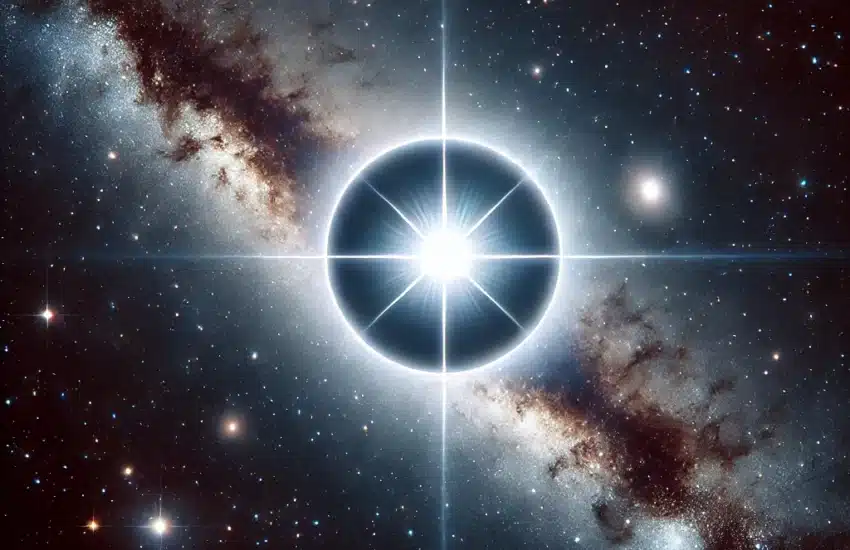The universe is full of mysteries, and STARS-923 is one of its most intriguing discoveries. This distant star, located at the very edge of the observable universe, is about 13.5 billion light-years from Earth. Discovered by astronomers using the Hubble Space Telescope and later confirmed by the James Webb Space Telescope, STARS-923 offers a rare glimpse into the early stages of cosmic evolution.
What Makes STARS-923 Special?
A Glimpse into the Past
STARS-923 isn’t just any star; it’s a window into the universe’s infancy. After the Big Bang, the light from STARS-923 started its trip toward Earth a few hundred million years ago. It provides a unique view into the early universe, helping scientists understand how the first stars formed and evolved.
Population III Stars
STARS-923 is believed to be a Population III star. These stars are almost entirely composed of hydrogen and helium, with virtually no heavier elements. They are among the very first stars formed after the Big Bang, making them nearly as old as the universe.
Characteristics of STARS-923
Size and Luminosity
One of the most striking features of STARS-923 is its size. It’s estimated to be several hundred times more massive than our Sun. This immense mass makes STARS-923 incredibly luminous, outshining even the brightest stars in our galaxy. However, giant stars like STARS-923 have shorter lifespans due to their rapid consumption of nuclear fuel.
Location and Environment
STARS-923 is located in a remote and isolated region of space. This area is part of the cosmic frontier, with very few galaxies and celestial bodies nearby. The environment around STARS-923 is extremely cold and dark, with minimal radiation or cosmic dust interfering with observations.
Why Studying STARS-923 Matters
Understanding Early Star Formation
Studying STARS-923 helps scientists learn more about how the first stars formed in isolated regions of space. This knowledge is crucial for understanding the early universe and the processes that led to the formation of galaxies and other cosmic structures.
Mapping the Milky Way
STARS-923 also provides valuable information about the distribution of stars in the Milky Way. By analyzing this distant star, astronomers can better map our galaxy and understand its structure and composition.
“For more insights on wellness and health, you might want to check out our detailed articles on Supplements 4 Fitness.”
Challenging Existing Theories
The unique characteristics of STARS-923 challenge existing theories about star formation and evolution. This prompts scientists to revise their hypotheses and develop new theories, advancing our overall understanding of the universe.
How to Observe STARS-923
A Challenge for Observers
Observing STARS-923 is no easy feat due to its faintness and extreme distance. However, dedicated amateur astronomers can catch a glimpse of this celestial wonder. The best time to observe STARS-923 is during the winter months when the sky is clear and light pollution is minimal.
Optimal Viewing Conditions
To get the best view of STARS-923, it’s essential to use a powerful telescope with advanced optics. Observatories located in high-altitude areas or remote locations far from city lights offer the best chances for observing this distant star. Techniques like long-exposure photography can also help capture detailed images of STARS-923.
Conclusion
STARS-923 represents a significant milestone in astronomical research. This distant star offers a unique opportunity to explore the early universe and test fundamental theories about cosmic history. As technology advances and new observations are made, we will continue to uncover the mysteries of STARS-923, expanding our knowledge of the cosmos and pushing the boundaries of human curiosity.
Studying STARS-923 highlights our enduring quest to explore the unknown and deepen our understanding of the universe. The insights gained from this distant star will help shape our comprehension of cosmic evolution and the formation of celestial bodies.
FAQs
- What is STARS-923?
STARS-923 is a distant star located about 13.5 billion light-years from Earth. It was discovered using the Hubble Space Telescope and confirmed by the James Webb Space Telescope. It’s one of the earliest stars formed after the Big Bang. - Why is STARS-923 important for astronomers?
STARS-923 provides valuable information about the early universe and the formation of the first stars. It helps scientists understand cosmic evolution and the structure of the Milky Way. - How can I observe STARS-923?
Observing STARS-923 requires a powerful telescope and optimal viewing conditions. The best time to observe is during winter months when the sky is clear, and light pollution is minimal. High-altitude or remote observatories are ideal for viewing. - What makes STARS-923 different from other stars?
STARS-923 is a Population III star, composed mostly of hydrogen and helium. It is among the first generation of stars and is significantly more massive and luminous than most stars we see today. - What challenges are involved in studying STARS-923?
The primary challenges include its faintness and extreme distance. Capturing detailed images requires advanced telescopes and techniques, and the star’s remote location makes observations difficult.

